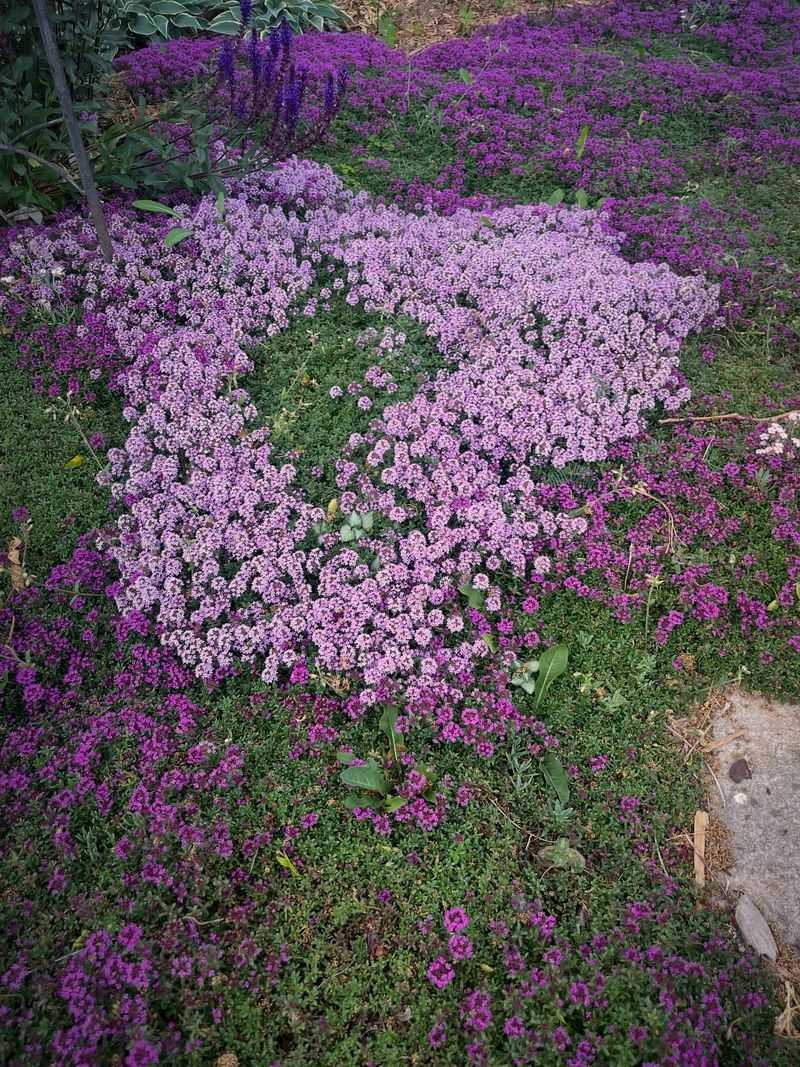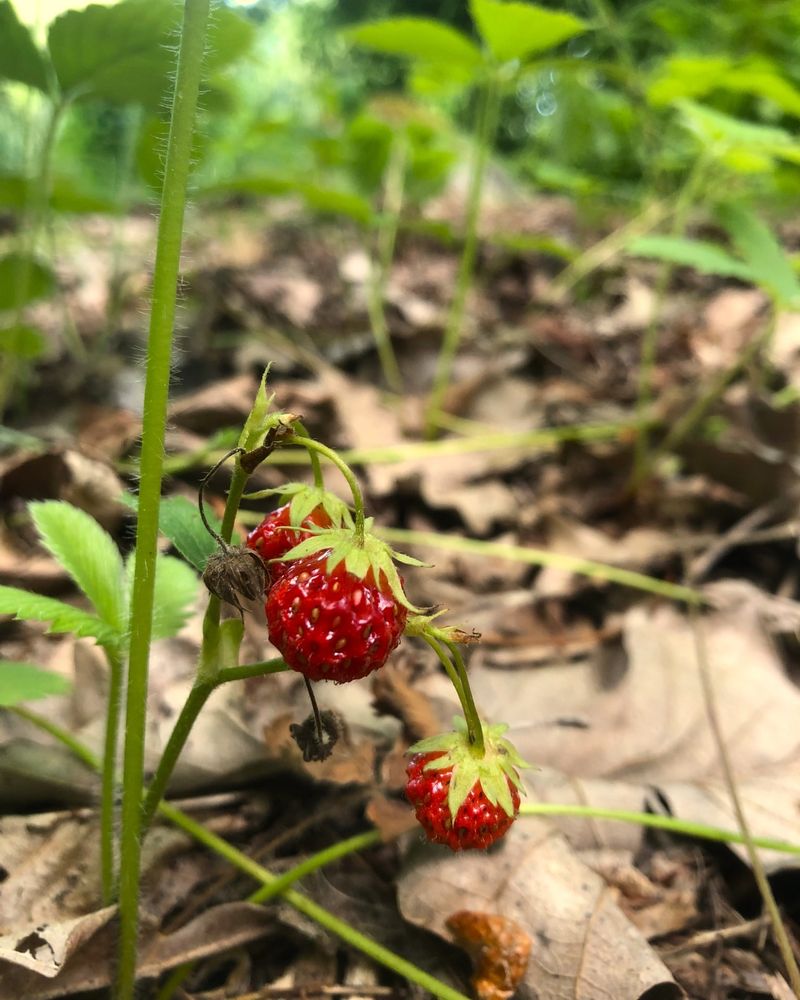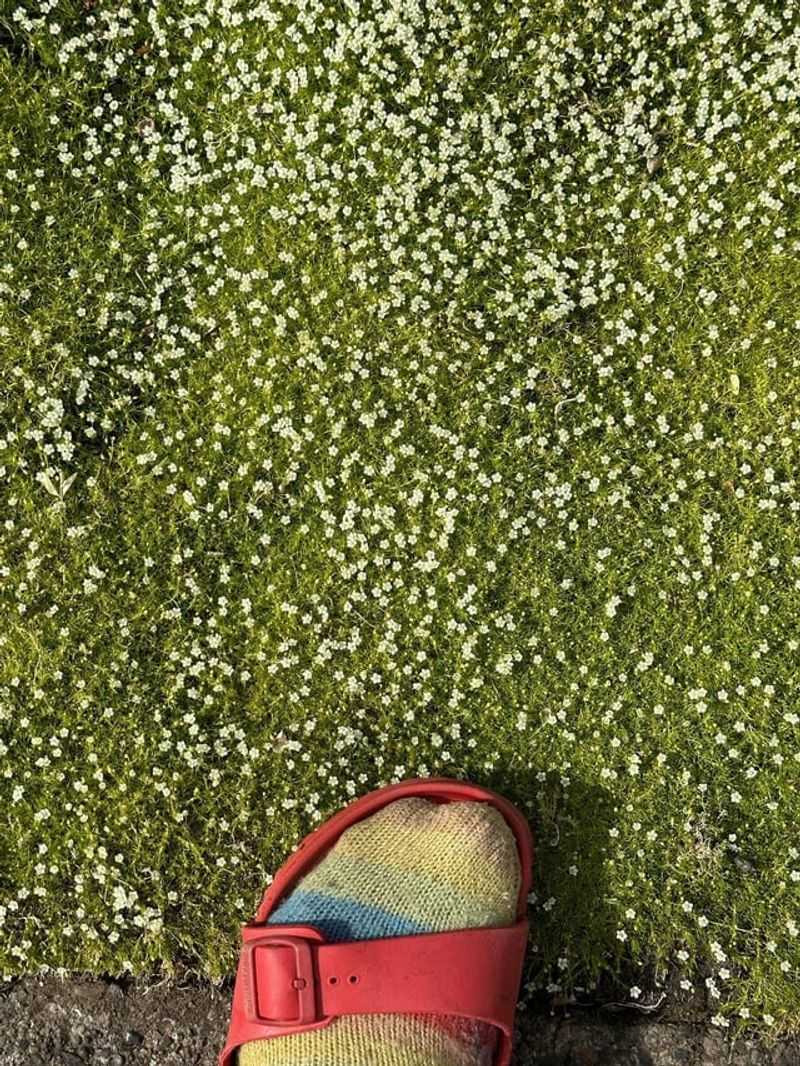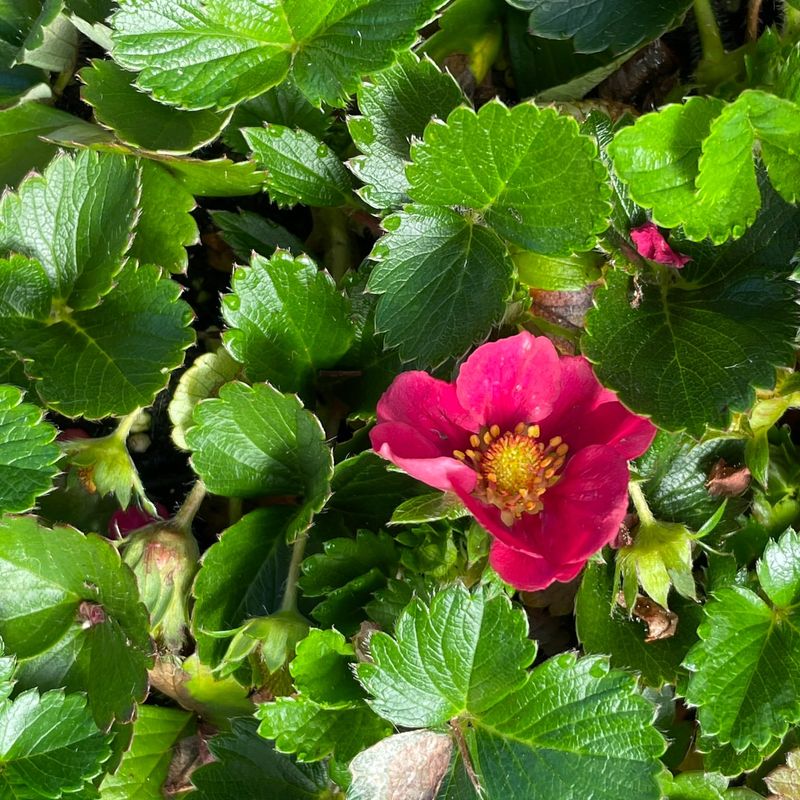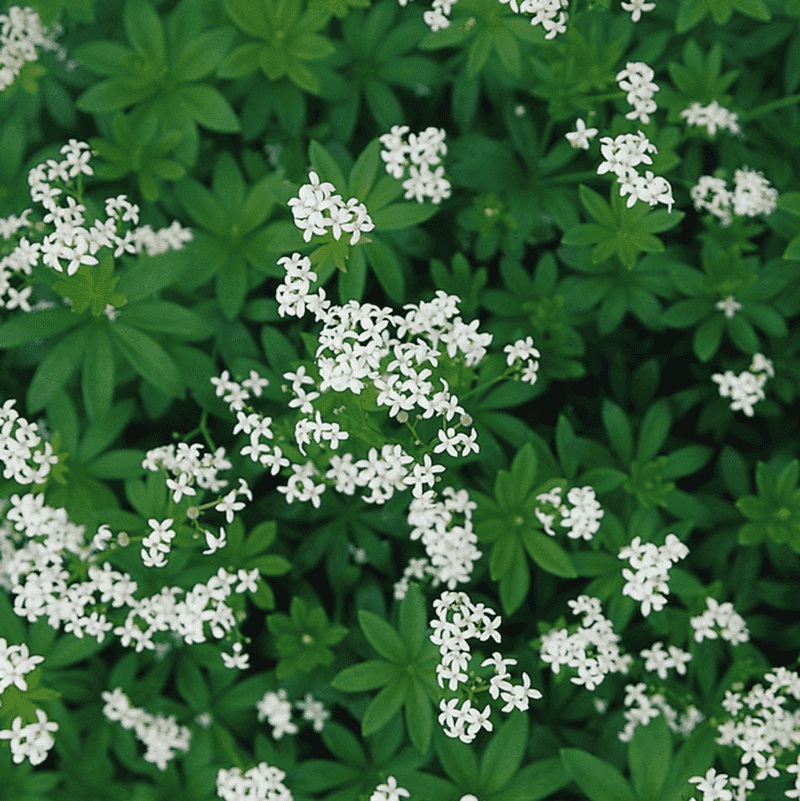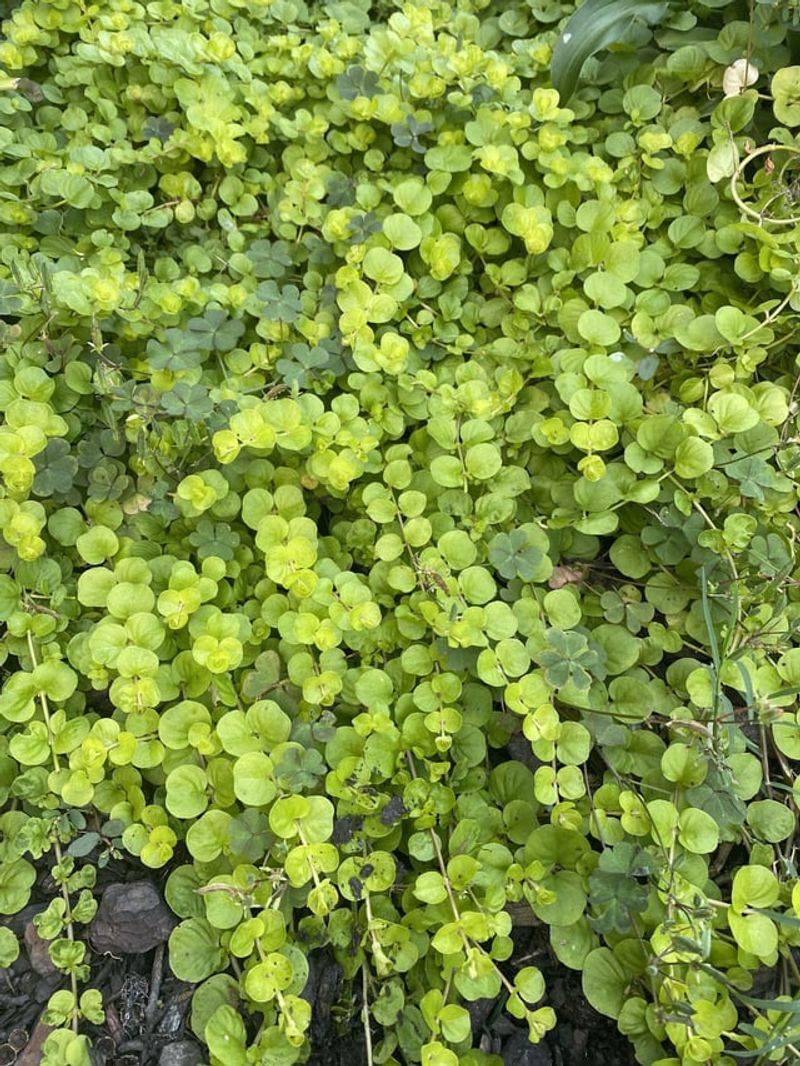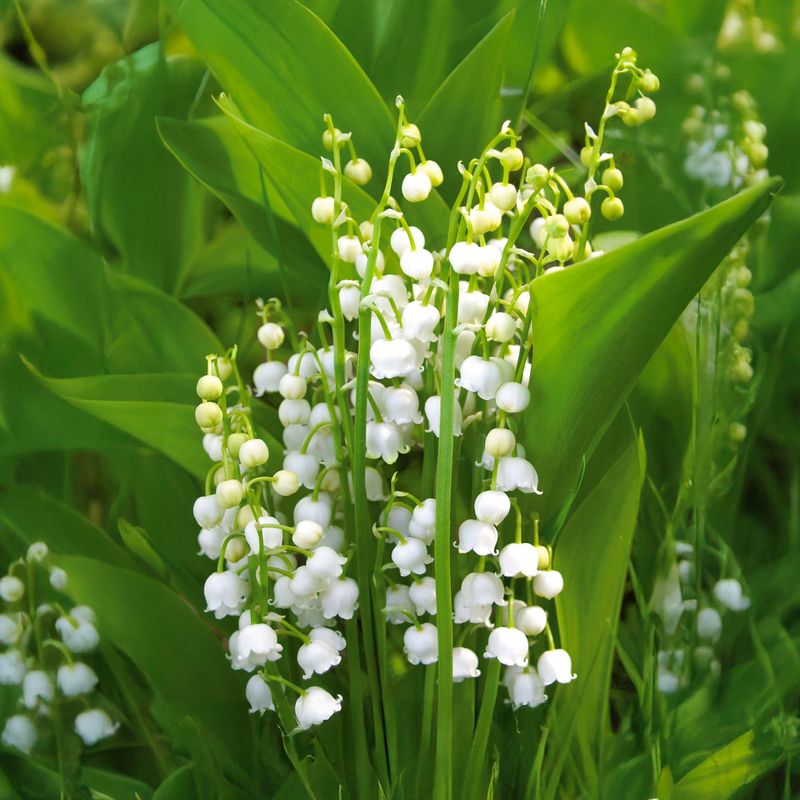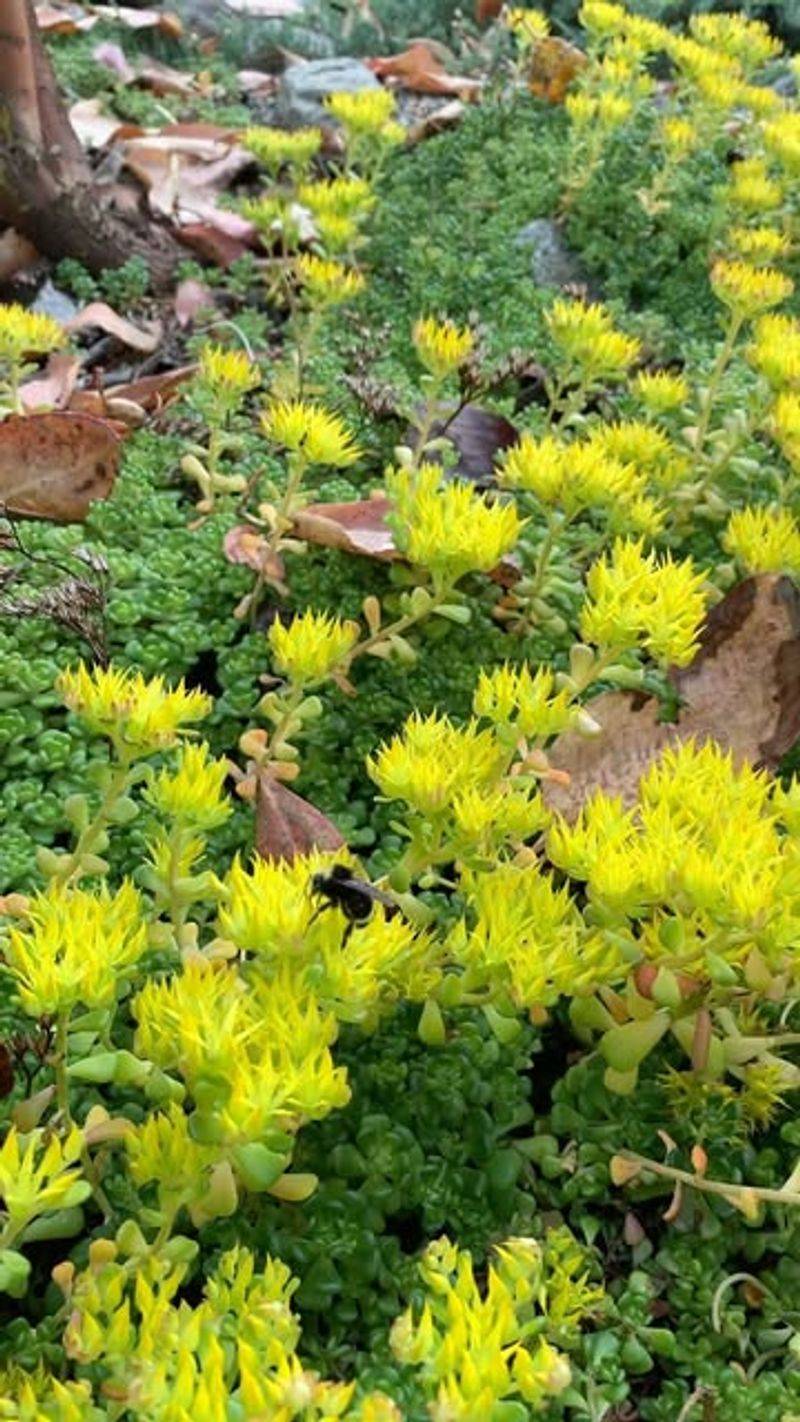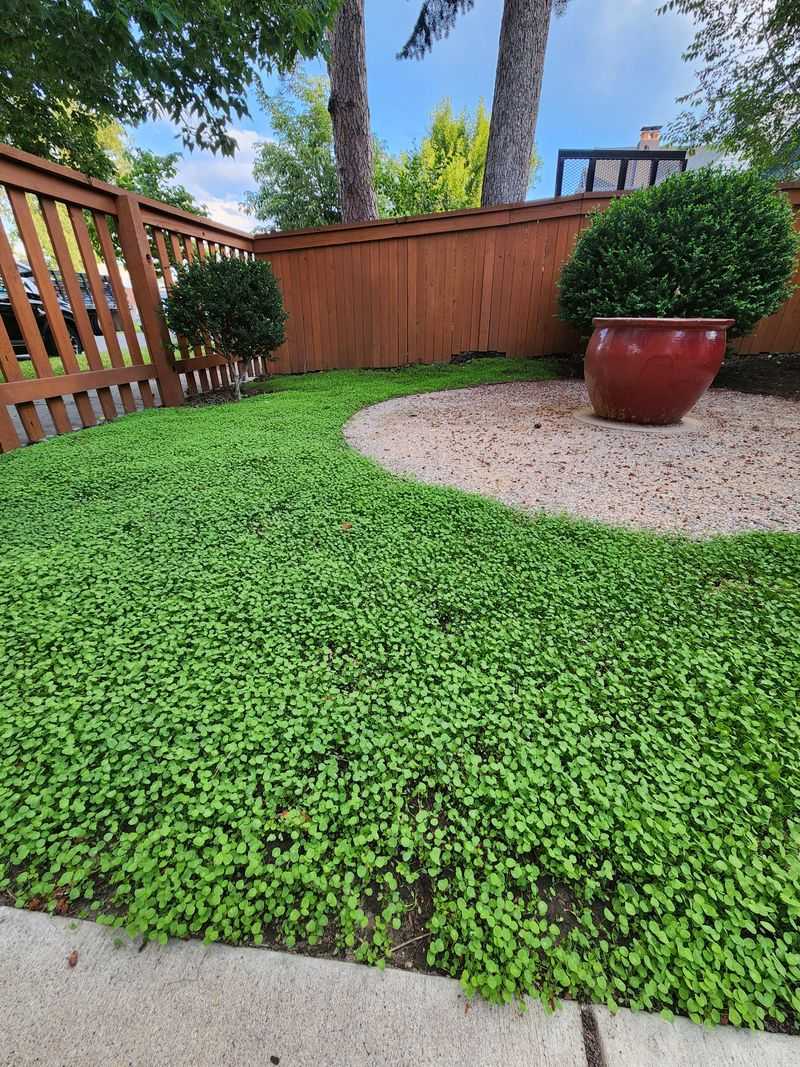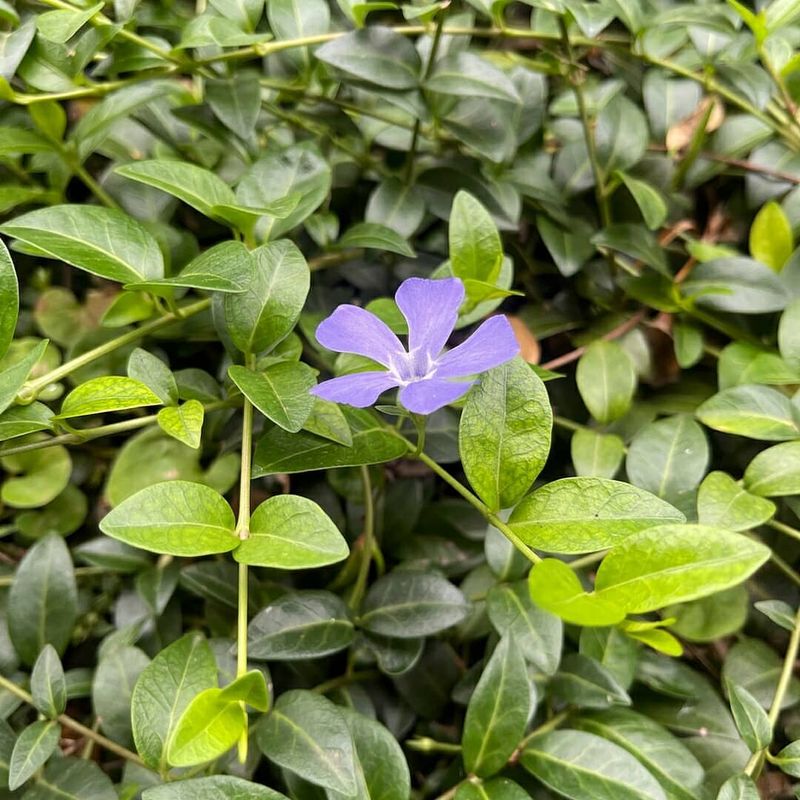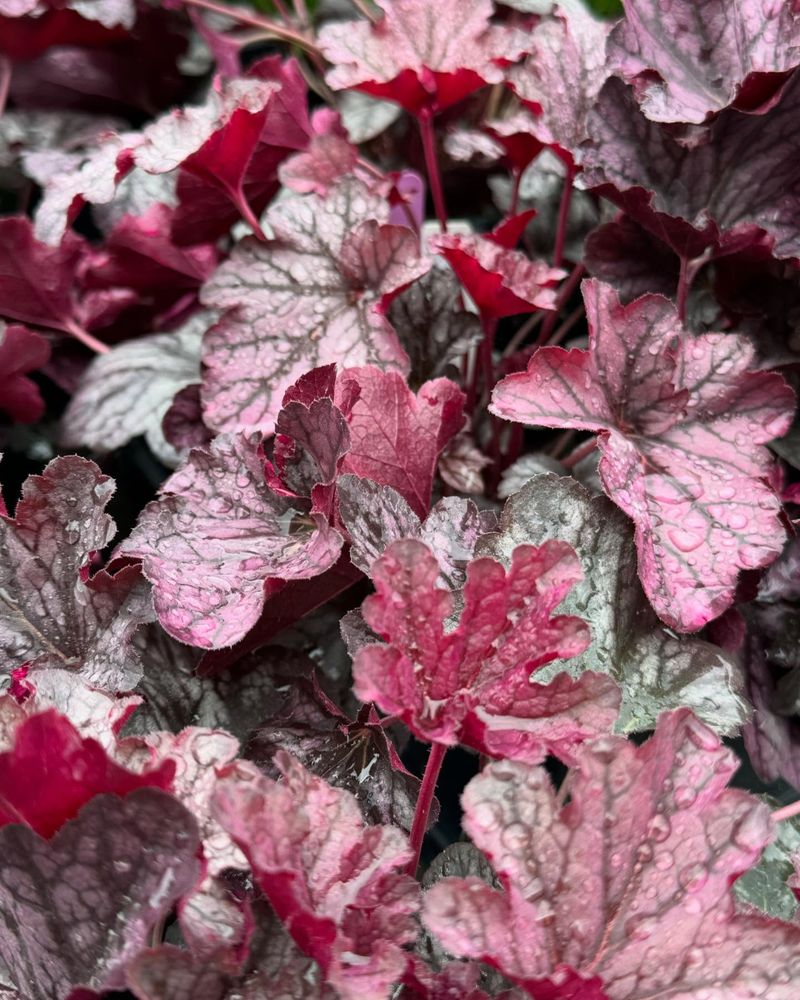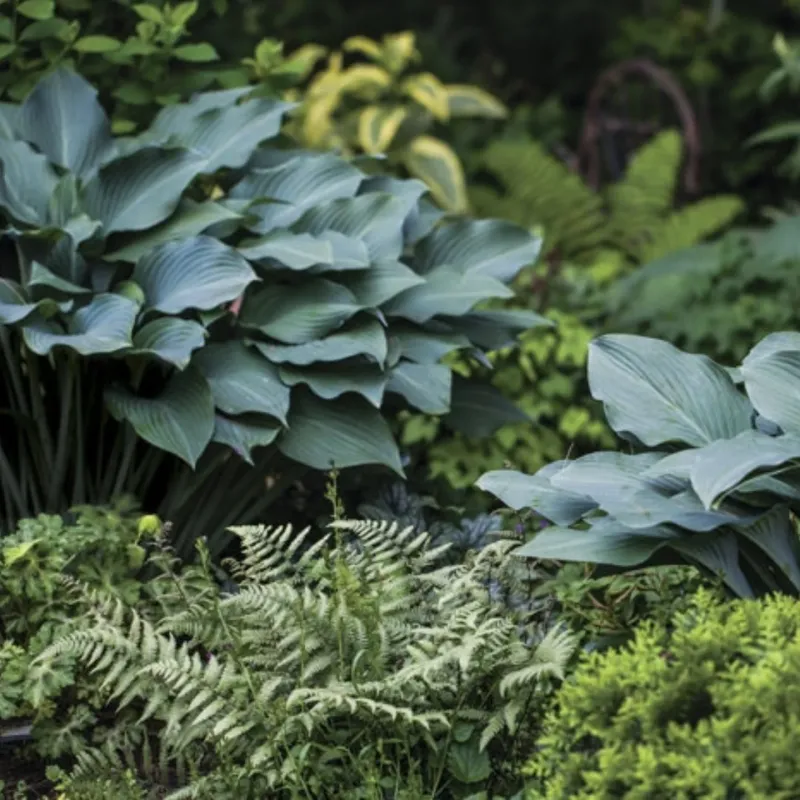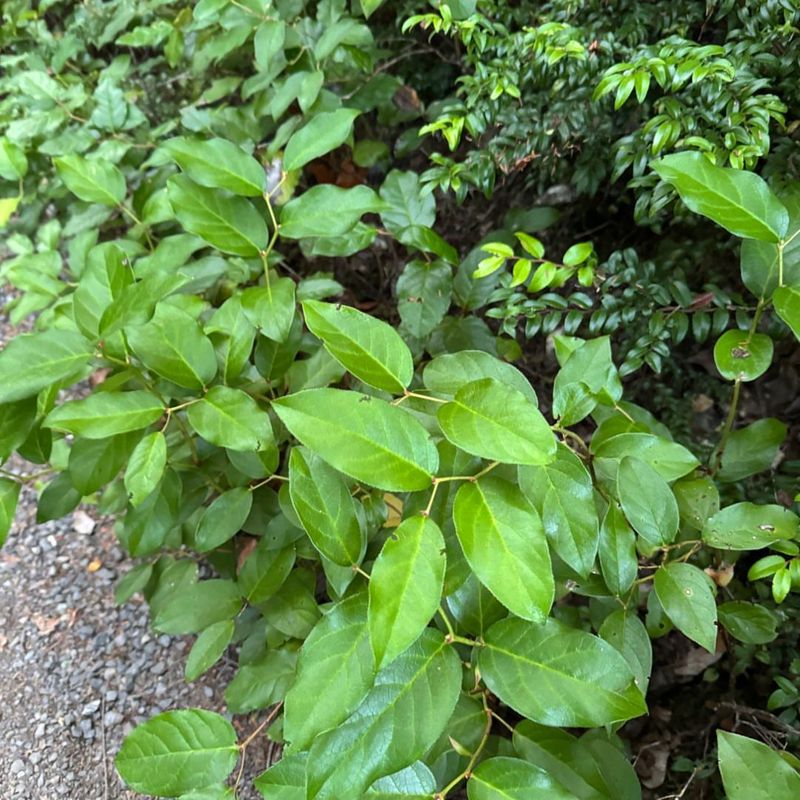Tired of the endless cycle of mowing, watering, and fertilizing? Washington’s climate makes it easy to break free from the traditional lawn routine. With the right groundcovers, you can enjoy a lush, vibrant yard that practically takes care of itself.
These low-maintenance plants spread across the soil, crowding out weeds and adding texture, color, and seasonal interest. From creeping thyme to native sedums, they offer beauty without the fuss. Plus, they’re better for the environment and your water bill.
Whether you live in the rainy west or the drier east, there’s a groundcover that fits your region’s needs. It’s time to rethink your lawn—and let nature do more of the work.
1. Kinnikinnick (Bearberry)
Native to Washington’s forest edges, this evergreen spreader creates a dense carpet of small, leathery leaves that turn bronze-red in winter. The pink spring flowers transform into bright red berries that attract birds.
Extremely drought-tolerant once established, kinnikinnick handles poor soils with ease. No need for fertilizer or regular watering after the first year.
Works beautifully on slopes where grass struggles, preventing erosion while requiring almost no maintenance. Perfect for sunny spots in Western Washington where drainage is good.
2. Creeping Thyme
Walking on this aromatic groundcover releases a delightful fragrance that might remind you of your favorite Italian dishes. During summer, tiny purple flowers attract beneficial pollinators to your garden.
Hardy enough for Washington’s varied climate zones, creeping thyme tolerates foot traffic better than most alternatives. The drought resistance makes it perfect for eastern Washington’s drier conditions.
Maintenance consists of occasional trimming to keep edges tidy. Plant between stepping stones or in sunny spots where grass struggles to grow.
3. Wild Strawberry
Imagine tiny, sweet berries hiding among lush green leaves right in your yard. Native wild strawberry spreads via runners, creating a dense mat that outcompetes weeds naturally.
Spring brings delicate white flowers, followed by edible berries in early summer. Birds and kids alike treasure hunting for these little treats!
Perfectly adapted to Washington’s climate, wild strawberry thrives in partial shade to full sun. The plants maintain their attractive appearance even through our rainy seasons without developing fungal issues common to other groundcovers.
4. Corsican Mint
So tiny you might miss it at first glance, this miniature mint creates a carpet just half an inch tall. Each step releases an intense minty fragrance that lingers in the air.
The emerald foliage forms a seamless blanket between pavers or along garden paths. During summer, microscopic lavender flowers add subtle color without disrupting the smooth texture.
Prefers the cooler, moister conditions of Western Washington gardens. Morning sun with afternoon shade provides ideal growing conditions, mimicking its natural woodland habitat.
5. Blue Star Creeper
From a distance, the tiny blue flowers covering this groundcover create the illusion of morning mist hovering just above the soil. The delicate star-shaped blooms appear from late spring through summer.
Despite its delicate appearance, blue star creeper handles moderate foot traffic without complaint. The dense growth suppresses weeds effectively while requiring minimal care.
Particularly well-suited to Washington’s maritime climate, this groundcover appreciates regular moisture but won’t rot during our rainy winters. Works beautifully in partially shaded areas where grass often struggles.
6. Moss
Many Washington gardeners fight moss in their lawns, but intentionally cultivating it creates a lush, velvety carpet perfect for shady spots. Various species offer different textures and shades of green.
Requiring no mowing, fertilizing, or supplemental water once established, moss truly exemplifies low-maintenance landscaping. It thrives in our naturally acidic Northwest soils.
For quicker establishment, try the blender method: Blend moss with buttermilk and paint the mixture where you want moss to grow. Within weeks, you’ll have a living carpet perfectly suited to our cool, damp climate.
7. Ornamental Strawberry
Unlike its wild cousin, ornamental strawberry focuses on looks rather than fruit. The glossy, trifoliate leaves form a dense mat that stays attractive year-round in most Washington gardens.
Spring brings abundant white or pink flowers that last for weeks. Some varieties produce small, decorative berries that add visual interest without being particularly tasty.
Drought-tolerant once established, this groundcover handles both the rainy western regions and drier eastern parts of our state. The deep roots help prevent soil erosion on slopes while choking out most weeds.
8. Sweet Woodruff
Medieval Europeans scattered sweet woodruff’s fragrant leaves on floors as natural air fresheners. Today, this woodland native creates a beautiful groundcover beneath trees and shrubs where grass refuses to grow.
Whorls of bright green leaves form a dense mat that suppresses weeds effectively. May brings clusters of tiny white flowers hovering above the foliage like miniature clouds.
Particularly happy in Western Washington’s moist, shady conditions, sweet woodruff spreads steadily without becoming invasive. The leaves release a pleasant hay-like scent when crushed or dried.
9. Creeping Jenny
Golden coins of foliage brighten shady corners where this adaptable groundcover spreads. The round, penny-shaped leaves form chains that weave through garden beds, softening edges and filling bare spots.
Yellow cup-shaped flowers appear in summer, adding another dimension of color. The chartreuse variety practically glows in partial shade, creating visual interest even without blooms.
Handles Western Washington’s wet winters with ease, though may need containment in ideal conditions. Perfect for cascading over walls or spreading beneath shrubs where its bright color contrasts beautifully with darker foliage.
10. Ajuga (Bugleweed)
Spikes of deep blue flowers rise above glossy foliage in spring, creating a stunning display that bees absolutely adore. After blooming, the textured leaves continue providing interest with their purple, bronze, or variegated colors.
Spreading by underground runners, ajuga quickly fills bare spots and chokes out weeds. The dense growth habit prevents soil erosion on slopes and banks.
Thrives in Washington’s varied conditions from full shade to partial sun. Even our coldest eastern winters don’t faze this tough performer, which returns reliably year after year with minimal care.
11. Lily Of The Valley
Sweetly scented bell-shaped flowers dangle above broad green leaves in spring, filling the air with fragrance. The delicate appearance belies this groundcover’s tough nature and ability to thrive in difficult conditions.
After flowering, small red berries form, adding visual interest. Note that all parts are toxic, so place accordingly if you have pets or small children.
Perfectly suited to Washington’s deep shade areas where other plants struggle. The spreading rhizomes gradually fill in bare spots under trees and along north-facing foundations where grass refuses to grow.
12. Juniper
Low-growing juniper varieties create a sea of blue-green that stays attractive through all four seasons. The needle-like foliage offers wonderful texture and color contrast in mixed plantings.
Once established, these tough evergreens shrug off drought, making them perfect for Eastern Washington’s challenging conditions. Their deep roots stabilize slopes while the dense growth prevents weed invasion.
Many varieties stay under 18 inches tall while spreading 6-8 feet wide. Blue Rug and Shore juniper perform particularly well in our state’s varied climate zones, requiring almost no maintenance once established.
13. Sedum (Stonecrop)
Succulent leaves in shades from lime green to deep burgundy create living tapestries that change with the seasons. Late summer brings starry flower clusters that attract butterflies and bees by the dozens.
Remarkably drought-tolerant, sedums store water in their fleshy leaves, allowing them to thrive in Eastern Washington’s hot, dry summers. They laugh at poor soil, actually preferring less fertile ground.
Low-growing varieties like ‘Dragon’s Blood’ and ‘Angelina’ spread to form tight mats that prevent weeds while requiring virtually no care. Perfect for sunny spots where grass burns out during summer heat.
14. Clover
Microclover creates a lush, green carpet that stays shorter than traditional lawn grass while requiring far less water. The tiny leaves form a tight mat that feels wonderful underfoot.
As a legume, clover captures nitrogen from the air and transfers it to the soil, essentially self-fertilizing. This natural process eliminates the need for chemical fertilizers.
Handles both Western Washington’s rain and Eastern Washington’s summer heat admirably. Stays green longer during drought and recovers quickly from foot traffic, making it an excellent play area alternative to traditional turfgrass.
15. Vinca Minor (Periwinkle)
Glossy evergreen leaves create a dense mat that effectively smothers weeds while remaining attractive year-round. Spring brings periwinkle-blue flowers that dot the foliage like scattered stars.
Shade-loving by nature, vinca thrives in those difficult spots under trees and along north-facing foundations. The trailing stems root as they spread, helping control erosion on gentle slopes.
Particularly well-suited to Western Washington’s climate, though it appreciates some afternoon shade in Eastern Washington. Once established, it requires almost no maintenance beyond occasional trimming to keep it within bounds.
16. Heuchera (Coral Bells)
Ruffled leaves in shades from silver to purple to caramel create year-round interest without requiring seasonal replanting. The colorful foliage brightens shady spots where grass struggles to grow.
Delicate flower stalks rise above the leaves in summer, attracting hummingbirds with their tiny bell-shaped blooms. The flowers may be subtle, but they add vertical interest to this primarily horizontal plant.
Native to North America, heuchera varieties have been developed specifically for Pacific Northwest conditions. They handle Western Washington’s rain beautifully while appreciating afternoon shade in Eastern Washington gardens.
17. Ferns
Unfurling fiddleheads in spring signal the beginning of another growing season for these ancient plants. Various native species like sword fern and deer fern create lush groundcovers perfectly adapted to Washington’s woodland conditions.
The feathery fronds catch morning dew, creating magical miniature landscapes in your garden. Their varied textures add depth and interest to shady areas where few other plants thrive.
Require minimal care once established in the right location. Western Washington’s naturally acidic, humus-rich soil provides ideal growing conditions, though they appreciate supplemental water during extended dry periods.
18. Salal
Indigenous to Washington’s coastal forests, salal creates a natural-looking groundcover beneath taller native shrubs and trees. The leathery, oval leaves maintain their glossy appearance year-round.
Pink lantern-shaped flowers appear in spring, developing into edible blue-black berries by late summer. Native tribes traditionally harvested these nutritious fruits, which taste similar to mild blueberries.
Extremely well-adapted to Western Washington’s climate and soils, salal requires almost no care once established. Its deep root system helps prevent erosion while its dense growth effectively suppresses weeds in naturalized landscapes.



